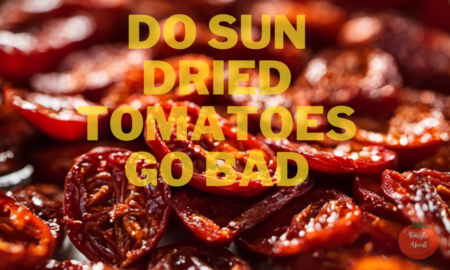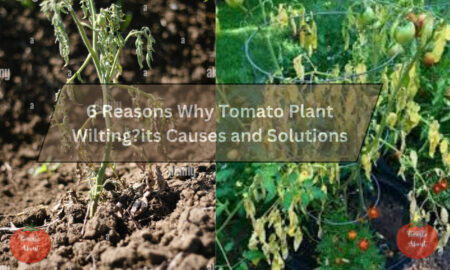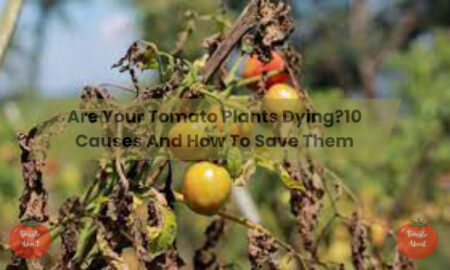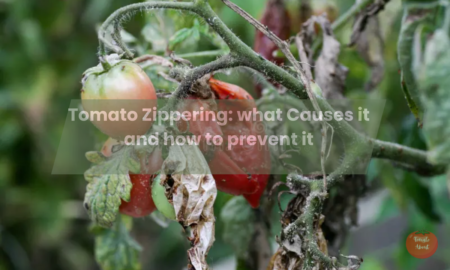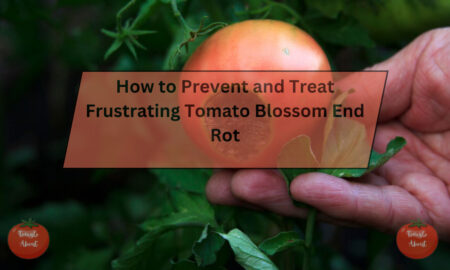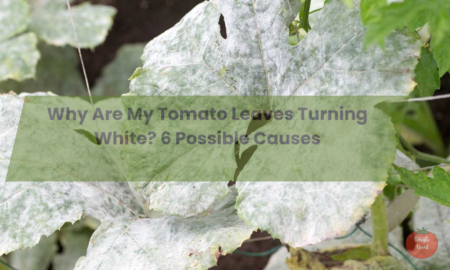Picture this: you’ve been eagerly watching a gigantic, deep purple tomato swell on the vine for weeks. Today’s the day you’re finally going to pick that beauty and slice it up for an amazing tomato sandwich. But when you excitedly flip it over, your heart sinks. It’s a catfaced mess! Deep cracks run along the sides, the top is all gnarled, and some sections are still green. What the heck happened here?
If you’ve ever grown heirloom tomatoes, you may have encountered the strange phenomenon of catfacing. While not ideal, these malformed heirlooms are still usable if you know how to handle them. Let’s unravel the mysteries around catfaced tomatoes!
What is Catfacing?
Catfaced tomatoes have an abnormal appearance. They look like regular tomatoes that got in a gnarly bar fight!
The skin is marked with deep cracks, scars, and indentations. Usually, the stem end or blossom end is most affected, but flaws can appear anywhere.
Often the ripening is patchy and uneven due to the scarring. Some spots seem ready to pick while others stay green. It’s like a tomato with two personalities, one side ripe and one still immature!
Some catfaced tomatoes have aberrant lobes or are wildly misshapen. Others look fairly normal except for cracks slicing across their surface.
Catfacing might not impact flavor much, but it leaves tomatoes looking far from appetizing. The irregular scars and zombie-like green patches are enough to scare you off grabbing one for your BLT.
Common identifications are:
- Deep cracks, scars, and indentations on the skin as if clawed or scratched
- Rough, raised protrusions and ridges
- Puckered, swollen, uneven bulges and segments
- Areas of uneven ripening with green blotches
- General misshaping and abnormal growth patterns
Catfaced tomatoes often have an ugly, mutant appearance. The skin seems to pucker and warp as the fruit develops. So what causes this feline-facial disorder? Let’s examine some contributing factors.
What Causes Catfacing in Tomato Plants?
While the origins aren’t fully understood, research has uncovered some likely culprits behind catfacing:
Fused Blossoms
The main instigator seems to be flower abnormalities. Occasionally, multiple tomato flowers will fuse together into one “mega-blossom.” When pollinated, these blooms produce a single fruit with too many seeds developing in sections, causing bulges, scars, and cracks. Identifying and removing fused blooms is key.
Genetic Predisposition
Large-fruited heirloom varieties appear especially prone to catfacing. Their thinner skins are easily damaged as the mammoth fruits fill out. Beefsteak types like Mortgage Lifter are frequent victims.
Environmental Stressors
Fluctuations in soil moisture, pruning extremes, and nutritional imbalances seem to magnify risks. Inconsistent conditions lead to rapid, uneven growth that strains the developing fruits.
While the environment plays a role, catfacing tendencies arise very early on through blossom abnormalities. Catching these blossom issues is critical for prevention.
Nutrient Imbalance
Too much nitrogen and not enough calcium and boron impact fruit formation.
Pruning Mistakes
Overzealous pruning stresses plants to focus energy on fewer fruits.
Uneven Watering
Erratic water patterns cause rapid growth that gives flawed fruit.
Which Tomato Varieties Are Most Vulnerable to Catfacing?
Some tomato varieties seem more destined for catfacing than others. In particular, extra large heirlooms often fall victim to wonky fruit formation.
The gigantic tomatoes that you wait all summer for are prime candidates for cracked, bumpy skin. Some heirloom varieties I’ve seen catfaced regularly include:
- Mortgage Lifter – a legendary huge pink tomato prone to scarring
- Cherokee Purple – a meaty purple beefsteak with warped ends
- Amish Paste – a long red heirloom that gets ribbed lobes
- Black Krim – a Russian dark tomato that cracks down the sides
- Brandywine – the classic pink Brandywine often has a gnarled blossom end
- Hillbilly – an orange-yellow jewel tomato that scars badly
- Japanese Black Trifele – an exotic black pear tomato that gets pointy lobes
Catfacing seems worst on thin-skinned giants like Mortgage Lifter. Cherry tomatoes and Roma types have lower occurrence, making them a wiser choice if catfacing plagues your patch.
Why Should You Care About Catfacing?
Catfacing affects the look of a tomato more than the flavor. But it can cause some problems:
- Cracks and scars invite pests and diseases. Catfacing creates openings for fungi, mold, and insects to access the inside of the tomato.
- Uneven ripening makes it hard to tell when catfaced tomatoes are ready to pick. Ripe spots mixed with green can confuse gardeners.
- Cracks and ridges make catfaced tomatoes tricky to slice. Jagged edges create waste and trouble getting even slices.
- Large catfaced tomatoes often disappoint. Gardeners wait all season for a huge tomato only to find it a catfaced mess at harvest.
While catfacing may not affect the taste, the flaws make for less appetizing tomato salads and sandwiches. And it complicates efforts to can or preserve the summer’s bounty.
Strategies for Preventing Catfaced Tomatoes
Diligent garden monitoring and care go a long way in preventing catfacing. Here are some key practices to adopt:
Scout for and Remove Fused Blossoms
Inspect plants weekly and look closely at flower clusters for any fused blossoms. These “mega-blossoms” with extra flower parts often hide inside the foliage. Remove them promptly by snipping them off at the stem. This will prevent the deformed fruits they would produce.
Stake or Cage Plants
Prevent heavy branching and foliage from contacting fruits. The rubbing can scar the delicate skin. Staking, caging, or trellising leads to beautifully formed tomatoes.
Control Insect Pests
Hornworms, stink bugs, and other pests damage blossoms and transmit diseases. Keep plants free of insects with regular monitoring, row covers, or organic sprays like Bt or neem oil.
Water and Fertilize Evenly
Erratic moisture and nutrition cause cracking and distorted growth. Maintain consistent 1-2 inches of water weekly and use a balanced fertilizer according to label rates.
Monitor Soil Health
Test soil pH yearly and amend as needed. Address any nutritional deficiencies based on soil test results. Proper nutrition reduces the risk of blossom end rot and other issues.
Allow Ample Space
Give plants room to grow. Overcrowding leads to competing for resources and foliage contacting fruits.
Select Resistant Varieties
Some tomato types tolerate environmental fluctuations better than others. Talk to other growers or read seed catalogs to select resistant varieties for your region.
What to Do With Catfaced Tomatoes
Catfacing might scare you off from eating affected tomatoes, but don’t let their appearance cause waste! These flawed fruits still offer great taste.
Here are tips to make use of your catfaced heirlooms:
- Dice up catfaced tomatoes for salsas and sauces.
- Slice in half and carve out bad spots to stuff like peppers.
- Roast quickly over the fire to accentuate smoky sweetness.
- Puree in a blender or food processor to remove troubling textures.
- Use catfaced tomatoes first when sauce recipes call for peeled and crushed.
- Freeze roasted catfaced tomatoes in portions to use all season long in soups.
- Quarter tomatoes and cook down into thick, scarred tomato paste.
- Ferment catfaced tomatoes with garlic and herbs into probiotic tomato sauce.
With some creative kitchen tricks, you can leverage the rich flavor of catfaced tomatoes without their appearance putting you off.
Key Takeaways for Conquering Catfaced Tomatoes
To recap, here are the top tips for preventing and managing catfaced tomatoes:
- Scout plants weekly for fused blossoms and remove them immediately.
- Stake, cage, or trellis plants to avoid branch rubbing.
- Select smaller tomato varieties that are less prone to catfacing.
- Maintain steady watering and nutrition to minimize fluctuations.
- Harvest promptly and handle damaged areas through cooking or preservation methods.
- Record observations each season to refine techniques annually.
- Share insights and compare notes with fellow tomato enthusiasts. More knowledge means more solutions!
While the occasional catfaced fruit is inevitable, these strange mutants needn’t take over your patch. Stay vigilant in care and selection and you can tip the scales in favor of flawless, sublime tomatoes.
Frequently Asked Questions
I planted my tomatoes in a raised bed this year and now have catfacing problems. Why?
Raised beds often lead to conditions more conducive to blossom end rot, cracking, and catfacing in tomatoes. The shallow soil mass heats up and dries out faster than ground beds. Using mulch and diligent watering when growing in raised beds is extremely important to maintain even moisture required by tomatoes. Amend soil with extra organic matter to improve water retention.
Why do my cherry tomato plants get catfacing but not my regular-size tomatoes?
Cherry tomatoes often escape catfacing issues that plague larger varieties. Their smaller fruit size puts less strain on the skin, so they are less prone to cracking or scarring even under imperfect conditions. However, they can still develop catfacing if genetically predisposed or when optimal growing conditions are not met. Ensure proper moisture, nutrients, and pest control regardless of tomato variety.
Is catfacing caused by Cross-pollination between tomato varieties?
Cross-pollination between different tomato plants is unlikely to cause catfacing. Tomatoes are self-fertile and do not require pollen from separate plants. While heirlooms can cross with other varieties if bees spread pollen, this normally does not affect fruit formation. Catfacing is caused primarily by genetic and environmental factors during flowering and fruit set. However, saving seeds from catfaced tomatoes may perpetuate the trait.
Wrapping up
Half the fun of growing heirloom tomatoes comes from the diversity of shapes, colors, and quirks. So while the occasional catfaced tomato may not be perfect, I wouldn’t trade those warty, lobed, wrinkly treasures for anything.
The flaws just add to the adventure of the heirloom journey! With careful handling and an open mind, you can reap a bountiful harvest of diverse tomatoes despite catfacing.
So embrace the beauty of imperfection. Savor the sublime flavors. And delight in the curiosity of learning to work with whatever unique treasures your heirloom tomato plants offer up.


